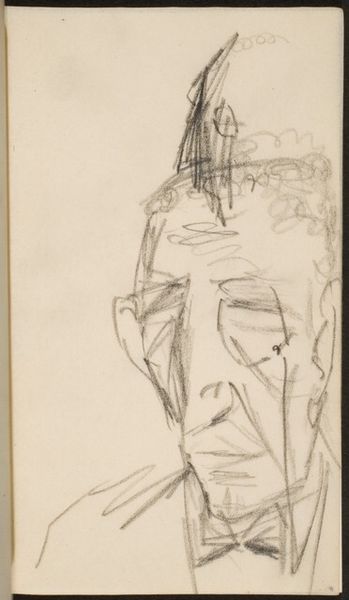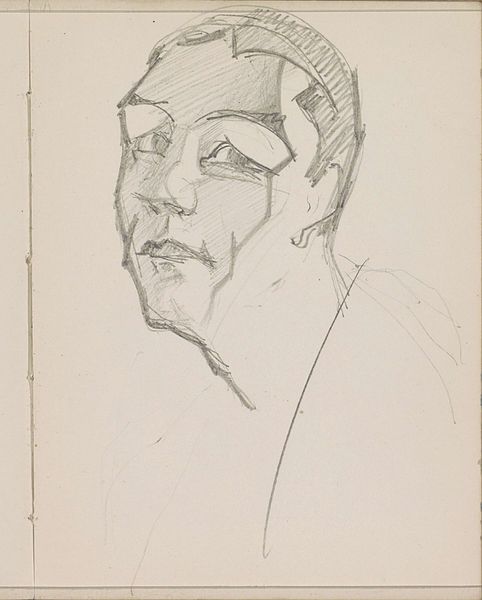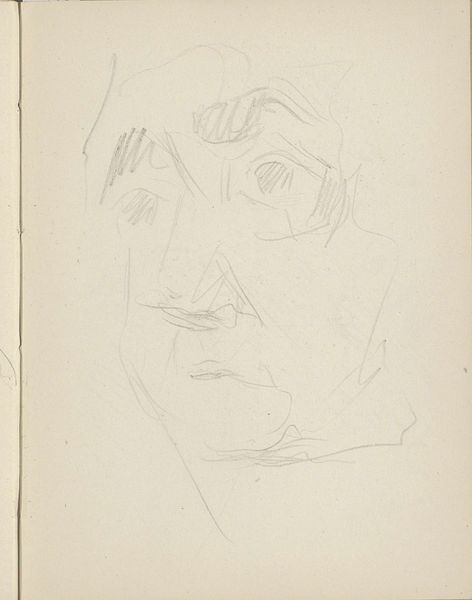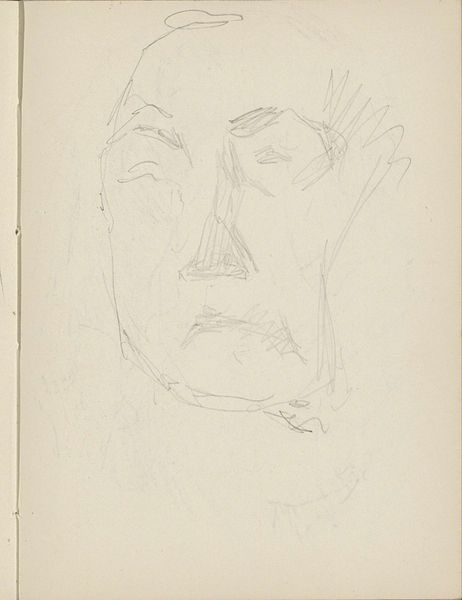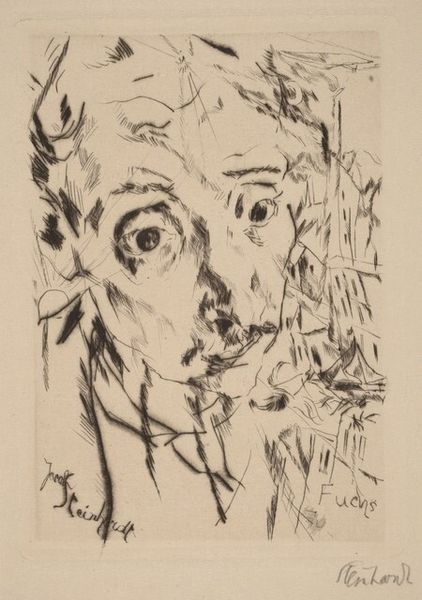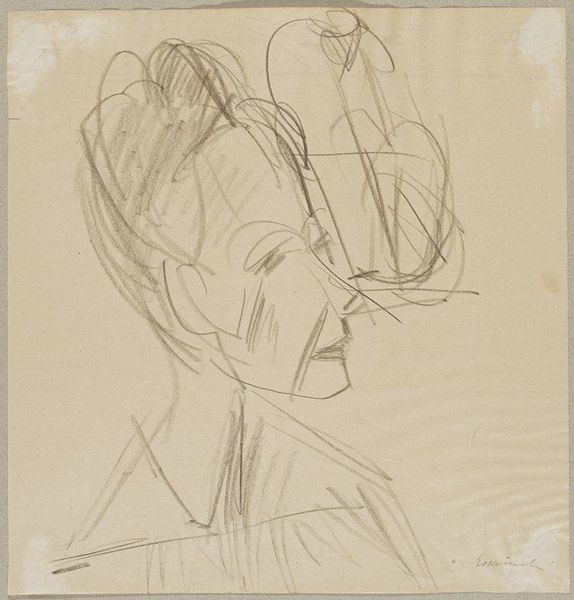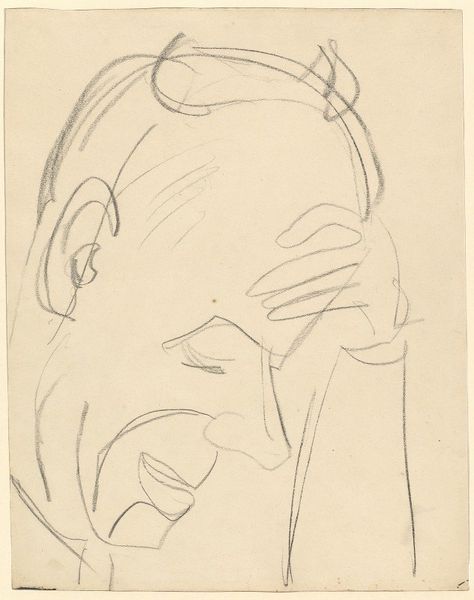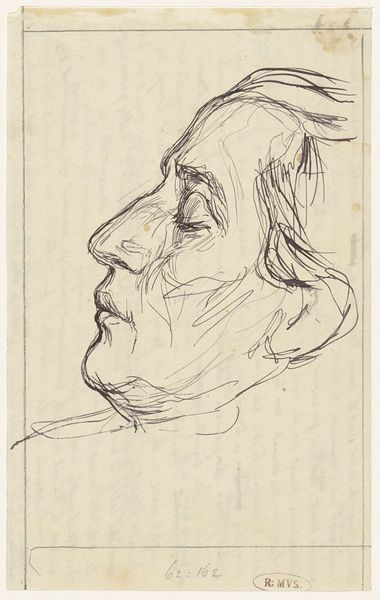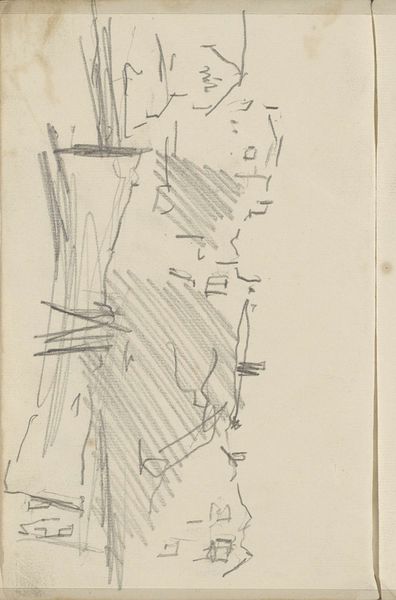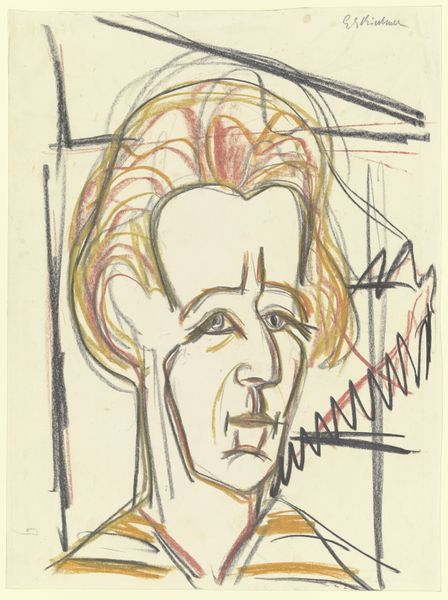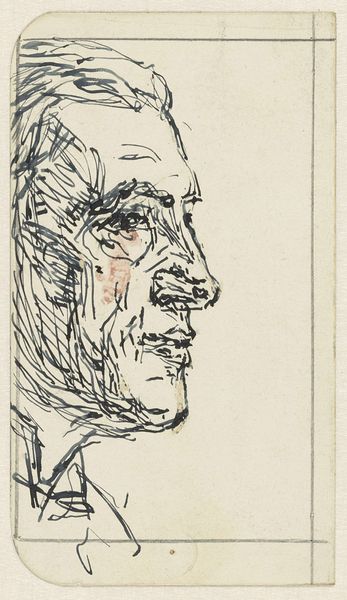
drawing, paper, dry-media, pencil
#
portrait
#
drawing
#
german-expressionism
#
paper
#
dry-media
#
pencil
#
expressionism
#
portrait drawing
Copyright: Public Domain: Artvee
Curator: This is "Skizze Redslob," a pencil drawing on paper by Ernst Ludwig Kirchner, created in 1924. What are your initial thoughts? Editor: Fraught, restless... there’s something undeniably melancholic in the hurried lines used to render this man. It looks less like a sketch, more like a psychic impression, raw and unfiltered. Curator: That emotional directness is quite characteristic of German Expressionism. Kirchner sought to capture the inner emotional experience, rather than a photographic likeness. Note the stark simplicity—he utilizes only a few, quickly rendered lines. Editor: Indeed. Knowing Kirchner’s involvement with Die Brücke, I wonder if we can connect the fragmented composition to the wider social and political fragmentation of Germany during the Weimar Republic. This sketch almost becomes a metaphor for a society grappling with the trauma of war. Curator: Interesting! His bold, angular lines do communicate a sense of tension and unease. But consider the more universal interpretations: the sketch is, after all, of a person. The lines that delineate the face hint at the inner psyche of the subject, exploring the transience of life through its fleeting nature. The choice of Redslob becomes a symbol of human existence itself. Editor: Perhaps both are true. Art often functions on multiple layers. It is an undeniable portrayal of human interiority, while the visual language also mirrors the anxiety riddling interwar Germany. Kirchner was himself deeply affected by World War I; the Expressionist aesthetic offered a conduit for processing personal and collective distress. Curator: A powerful reading! Expressionism channeled experiences of modernity, from industrialization to war, through individualized feeling and bold aesthetics. In "Skizze Redslob" it’s all captured with just a few swift strokes. Editor: So, while on the surface it appears as an exercise, there's clearly much more at play. Its starkness is what hits hardest. An image of its time, but simultaneously beyond it. Curator: Indeed. Its universal qualities also provide contemporary access points. Editor: Precisely. It's not just history, it's now.
Comments
No comments
Be the first to comment and join the conversation on the ultimate creative platform.

